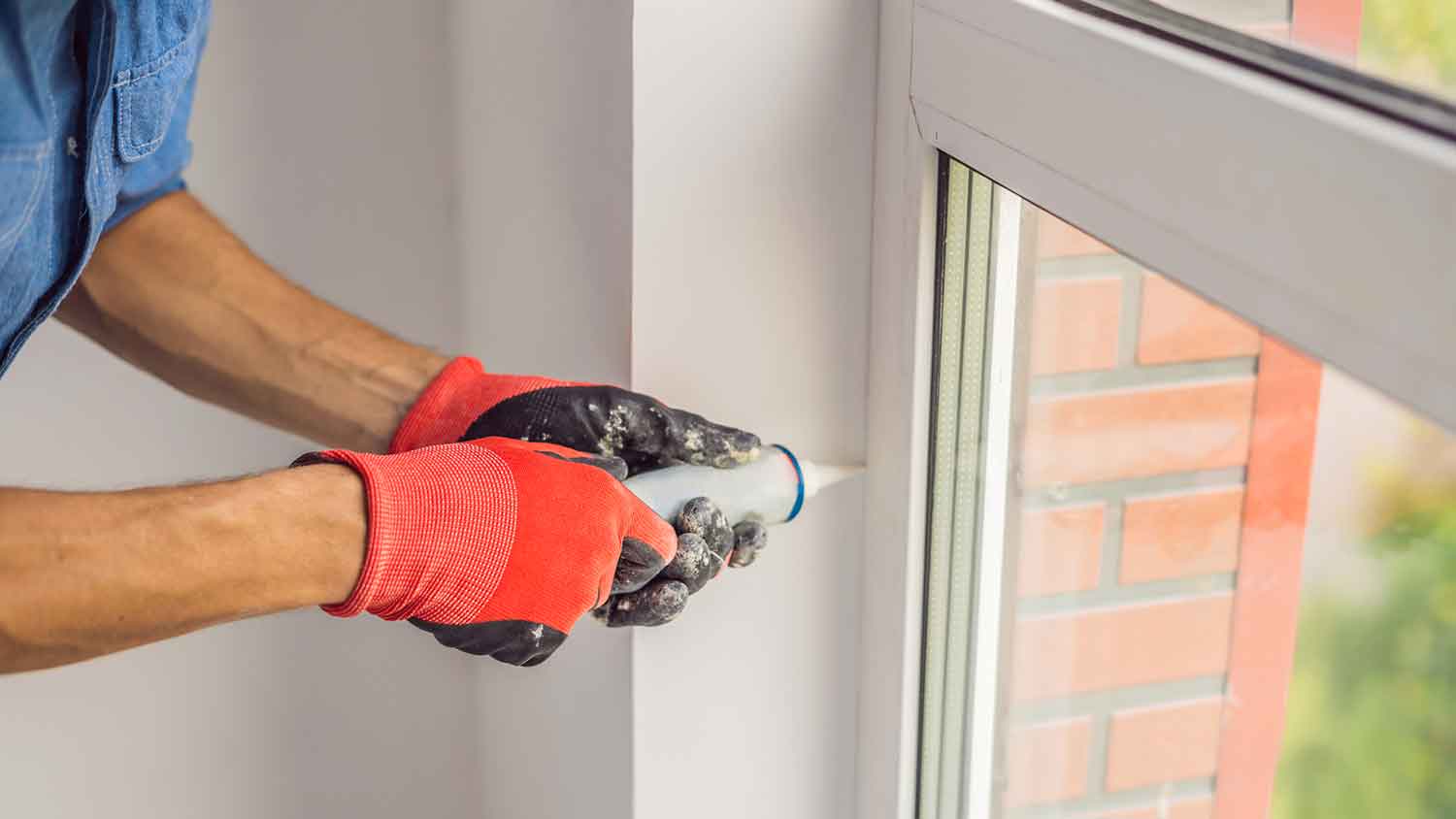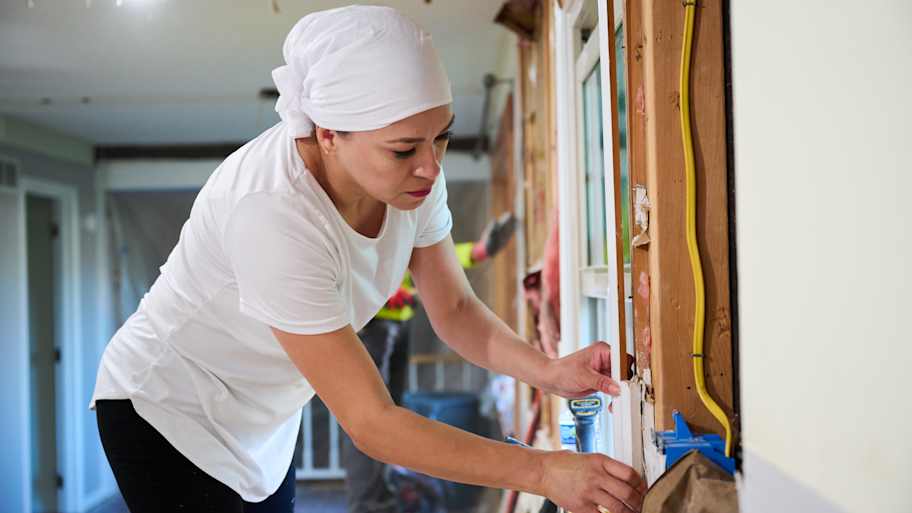7 Common Window Problems and How to Avoid Them
Windows suffer common problems over time — here’s how you can solve them


Drafty windows can significantly impact your utility bills, so don’t ignore them.
Window leaks are an urgent problem to fix because they can cause mold.
Fog or condensation between panes is caused by broken window seals.
Moisture is the main reason for rotting, warping, and cracking window frames.
Cracked and broken glass should be replaced by an experienced window repair company.
Windows allow us to gaze out at the world while letting in light and fresh air. But like any usable part of a home, they encounter issues over time that disrupt their functionality—and your comfort. We’ve all experienced window woes, like drafts, condensation, and operational issues. Luckily, there are simple solutions to most of these problems. By understanding the causes of these issues and knowing how to fix them, you can ensure they will stay in optimal condition for years to come.
1. Your Windows Are Drafty
Drafts are one of the most common window problems. They are not only uncomfortable but can also drive up your utility bills. Poor installation, worn weatherstripping, old or inadequate caulking, and warped or loose frames are just a few of the culprits that can lead to gaps or openings around windows.
If you have an older home, the windows might be single-pane windows, which are not as energy-efficient as double- or triple-pane windows.
Solution
Addressing these issues may involve repairing weatherstripping, caulking, tightening window frames, or replacing these items altogether. If you have an older home with single-pane windows, the best solution to fix drafty windows is to replace them with more energy-efficient ones.
2. You Notice Leaks in Your Windows

If you notice leaking from your windows, you should address this problem immediately. Unchecked leaks can cause mold to grow, which can not only damage your home but also affect your health. Poor installation and inadequate, damaged, or degraded sealant are common causes. But faulty flashing and cracks or breaks in the glass could also be the culprits for a leaking window.
Solution
Reseal or re-caulk the leaky window and clean the frame to prevent any more water from coming in. However, because this is such a serious issue, you should contact a local window repair professional to pinpoint the cause of the leak—and, if necessary, replace part or all of the frame.
3. Your Windows Are Rotting, Cracking, or Warping
Moisture is the biggest culprit when windows rot, crack, or warp, although extreme temperature changes can also play a part. Even too much sunlight can dry out and crack a window frame.
Solution
Replace the damaged part of the window and ensure it is watertight. Maintain the proper ventilation to prevent moisture from accumulating and use window coverings to reduce exposure to sunlight. Choosing high-quality materials when upgrading your windows can extend their life span.
4. You Have Windows That Won’t Stay Up

When a window won’t stay up, it’s typically due to issues with the balance mechanism. These can include worn parts like springs or cords, misaligned or otherwise damaged tracks, or debris stuck inside the sash. If the balance mechanism is working fine but is not connected to the window sash, you will not be able to keep the window open.
Solution
Reconnect the balance mechanism to the window’s shoes and pivot bar. If the mechanism itself is faulty, a window repair professional can remove the frame to see which parts need to be replaced.
5. You Have Windows That Won’t Open
Windows that won’t open are caused by a variety of factors, including failure of the operation mechanism or hardware. The window may also not open because of warping or swelling of the frame due to moisture and temperature extremes or dirt, debris, or paint in the window’s tracks.
Solution
Clean up any accumulated dirt or debris from inside the frame and add lubricant to make its movement smooth. If you need to know how to open a window that’s painted shut, cut along its edges with a window opener or utility knife to remove excess paint. If the window is warped or swollen, remove excess moisture with a dehumidifier or blow dry the area.
6. Your Windows Have Broken or Cracked Glass

Windows can crack or break due to defects, weather extremes, impacts, installation issues, or aging. Whatever the initial cause, it’s best to quickly replace the glass for safety reasons and to prevent a spike in energy costs.
Solution
Cover a cracked or broken window with wood or plastic and call a window repair company to replace it. While the cost to repair a window by a professional will be more than doing it yourself, replacing glass in a window can be dangerous, so leave this task to the experts.
I don’t suggest any clients do DIY glass repairs to save money—I consider it dangerous if you’re not familiar with the work. If you don’t put the spacers the proper way or miss a spacer, your glass will become crooked and, over time, start moving and collapsing.
7. Your Windows Are Foggy Between Panes
We’re all used to condensation on windows when we take a shower, which dissipates after a few minutes. However, when moisture gets trapped between a window’s panes, it can mean big trouble. A foggy or hazy appearance here indicates the presence of failed window seals.
Solution
If you catch the problem early, you can just replace the seals. But if it’s been happening for a while, you may need to replace the entire window.
Yes, you can fix windows without replacing them. However, this will depend on the severity of the issue and what your needs are. Minor water damage, broken glass, damaged casing, and worn caulking are usually easy repairs. But if there is excessive damage, the windows are constantly foggy, or the windows are very old, it’s best to consider replacing them. Replacement windows cost between $575 and $1,475 per window, or an average of $850 per window.
A window may fail because of age, defective mechanisms, or moisture. Depending on the issue, the window may be fixed with simple repairs. Otherwise, you’ll have to invest in replacing it. You can avoid damaged windows but keeping up with window maintenance.
Yes, caulking windows is worth it. Because moisture and air leaks are big sources of common window problems, caulking can be an inexpensive and easy way to eliminate both water and air from getting in.
















